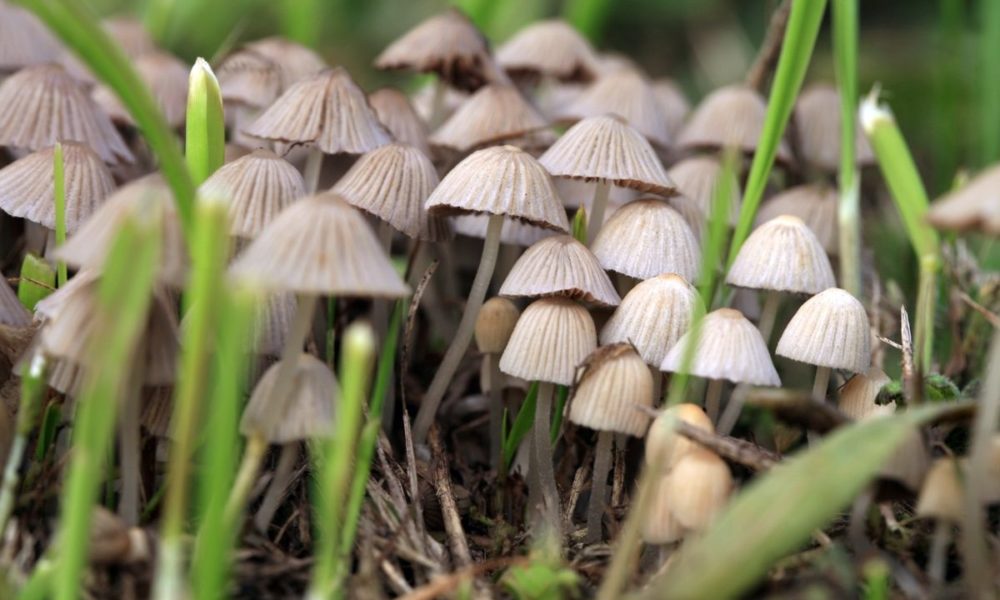Business
Do You Know How Many Kinds of Magic Mushrooms There Are on the Market?

With the growing popularity and acceptance of magic mushrooms, more people of all ages and backgrounds are taking them.
These special types of fungi have many powerful healing benefits ranging from medical to spiritual. Medical professionals have seen the way these mushrooms have safely treated many conditions particularly those that are difficult to treat, such as post-traumatic stress disorder (PTSD), depression, addiction, anxiety, and so much more.
These can be taken in several forms including brewing them into a tea, eaten raw or dried, added into food, and even turned into a powder to easily add to food or beverages.
But there are thousands of magic mushrooms out there, and one must remember that not all are considered magic mushrooms. In addition, not all are safe to take; others may be toxic and can cause a negative, even fatal experience.
Here’s what you should know about the many types of magic mushrooms out there.
Psilocybe Mushrooms
All edible and healing mushrooms contain psilocin and psilocybin, the primary hallucinogenic alkaloids responsible for the psychoactive experience, hallucinations, and potential spiritual activity that goes on when you consume it. Others contain baeocystin, though psilocybin is still more widely found.
There are many different forms of magic mushrooms though those in the psilocybe genus are the most popular and commonly found. Generally speaking, they tend to have dark spores and gills, and are found in the wild areas of the tropics and subtropics.
There are over 245 various species in this genus, and these below are the most widely consumed:
Psilocybe Cubensis: Cubensis is the most famous type of magic mushrooms. Also known as the golden cap, referring to the brown tops or the golden teachers, their caps can grow as large as 80mm wide. As they mature, the caps tend to flatten out. These shrooms tend to turn blue or purple in color when the cap or stem has been removed or damaged.
Cubensis are usually found on animal dung though they can also be easily cultivated indoors. For these reasons, it’s the most widely used type of magic mushroom
Psilocybe semilanceata: Also known as liberty caps, this species is another commonly used psychedelic. They can usually be found in grassy fields where cattle roam. They tend to be smaller, and their colors can be either light yellow to brown. It has a smaller, pointed cap.
Liberty caps are among the top most potent Psilocybin mushrooms on the planet. They are not as easily grown indoors so they are best found in the wild.
Psilocybe azurescens: Regarded by many as the strongest magic mushrooms in the world, this is one of the rarer magic mushroom varieties so be ready for a serious trip if you can find yourself some of these very special mushrooms. They can be cultivated indoors if you already have knowledge about growing mushrooms, though you can easily grow them in a garden.
Psilocybe cyanescens: Cyanescens can easily be identified by their unusually wavy caps, so some people refer to them simply as Wavy Cap mushrooms. They are another one of the more prevalent magic mushrooms found in the wild, typically found on wood chips or mulch. They are difficult to grow indoors.
Psilocybe pelliculosa: Pelliculosa mushrooms are recognizable through the broad top which resembles a bell. Though also hallucinogenic, these species are much milder than others in this genus. Because of its weak psychoactive properties, individuals may need to consume more to get a good hit and mental benefits though it’s also ideal for beginners who are still experimenting with magic mushrooms. Pelliculosa can be located in clusters or groups in the forest or along trails, particularly in coniferous woods.
Psilocybe Mexicana: Named after the country where it’s commonly found, this mushroom is another common brown cap. It’s also milder than other forms of psilocybin, due to low levels of hallucinogenic compounds and alkaloids. This mushroom is also referred to as the Mexican liberty cap, and it can be found in grass fields growing alone or in small groups.
Panaeolus cyanescens or Copelandia cyanescens
Copelandia mushrooms are a famous magic mushroom not from the Psilocybe genus. Also known as the Blue Meanies, they get this nickname because their caps and stems may change colors to blue or blue-green when bruised. These types of mushrooms are renowned for their potency, making them suitable for seasoned magic mushrooms consumers for whom psilocybe mushrooms may already be too mild. In many cases, they can contain as much as 5 times more psilocin than P. cubensis strains.
The panaeolus genus is a seriously strong type of magic mushroom. These contain more potent levels of psilocybin and psilocin, and there are more than 100 different kinds of mushrooms in this genus. They tend to have black spores and are found in cow dung, grass and forest litter; they also have gills turn black or gray when they mature, and cone or bell-shaped caps.
Conclusion
This is by no means an exhaustive list – just a summary of some of the popular magic mushroom species you may come across when looking for one to medicate or trip out with. They come in all shapes, colors, and sizes. Keep in mind that they each have a unique concentration of hallucinogenic compounds as well as particular effects.
Foraging for your own magic mushrooms is not recommended for beginners because many safe and edible species look like several toxic and fatal ones. Leave the foraging to the professionals or buy from a dispensary that you trust.